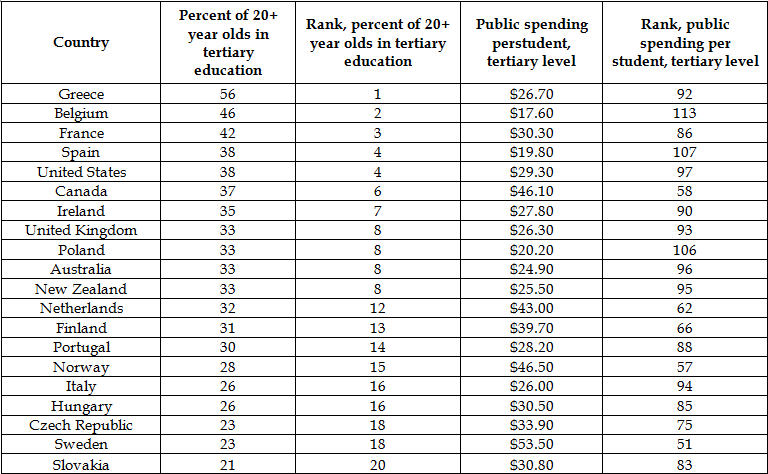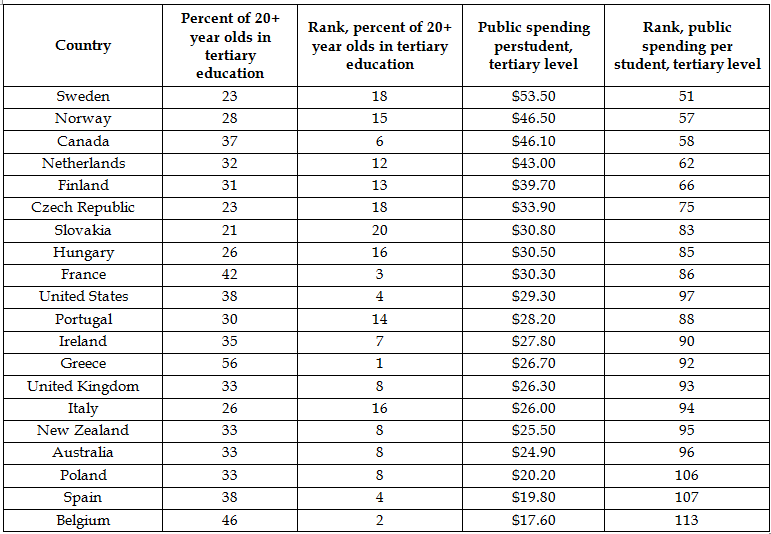The following is a Table Analysis practice question, which will be part of the GMAT Data Insights section.
The following two tables show the same data ranked in two different ways. (On the real GMAT, you will have sortable tables embedded in the page with the question.)
Note that “tertiary education” means all education following high school level: undergraduate as well as graduate studies. Here, “in tertiary education” includes those now enrolled in those programs, as well as all who have completed degrees. Note, also, many of the countries in the table have a high percent of total students in the table, and therefore rank considerably lower in public spending per tertiary student: countries with comparatively few students at the tertiary level rank much higher than the countries listed in the table.
For each of the following questions, select Yes if the statement can be shown to be true based on the information in the table. Otherwise, select No.
Practice Question Answers
(1) Yes; (2) Yes; (3) No
Practice Question Explanations
(1)”No country with more than a quarter of people over 20 year oldin tertiary programs” – so these are all countries on the first table, from Hungary up. Because those are all the top-ranking countries, no country not on the chart can be in this group.
No country in this group “spends more than $50/student on tertiary programs” – the only country in our table that spends more than $50/student is Sweden, which has just under a quarter (23%) of people over 20 year oldin tertiary programs. So, no country in the table meets the combined criteria, and no other countries off the table can. Therefore, the answer is Yes.
(2) Start with: “has more than 40% of all people over 20 year old in tertiary programs” – these are just three countries: Greece, Belgium, and France. All three of them spend under $40/student. Therefore, no country meets the combined criteria. Therefore, the answer is Yes.
(3) Start with: “has less than 20% of all people over 20 year old in tertiary programs.” These are countries that are not represented in the table, because they are below Slovakia in their percentage of all people over 20 year old in tertiary programs. We don’t have any information about where those countries fall, but clearly some of them would have to occupy ranks above 51st-place-ranked Sweden in spending per student. Sweden spends $53.50/student, so 50 countries not on the table spend more than that, and if they are not on the table, they all rank below Slovakia in their percentage of all people over 20 year old in tertiary programs. We actually can’t give a definitive answer, but we certainly do not have enough information to answer Yes to the question. Because the information is unclear, the answer is No.









Leave a Reply